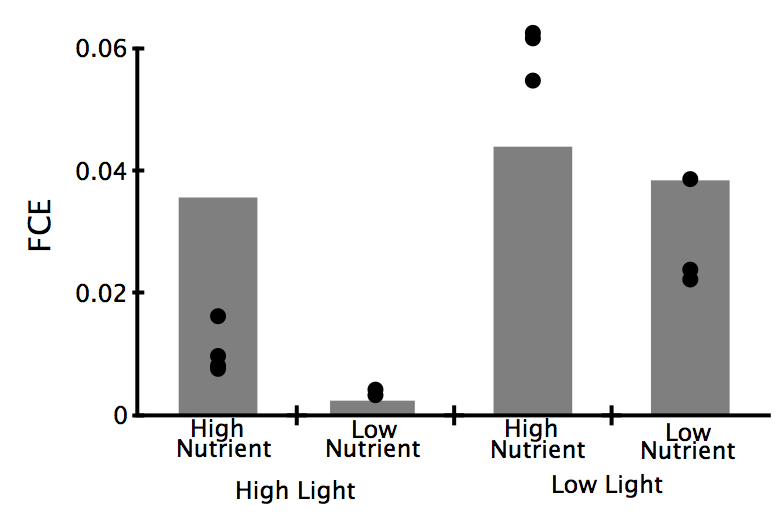Trophic transfer efficiencies in food chain models
This research is on ecological stoichiometric population models of two and three trophic levels that investigate the effects of light and nutrient availability on ecological transfer efficiencies. The models are two and three dimensional systems of ordinary differential equations, Lotka-Volterra type models, that incorporate two currencies, carbon (C) and phosphorus (P), across aquatic trophic levels: phytoplankton, zooplankton, and fish. The models use ecological trophic transfer efficiencies as important gauges of ecosystem function in order to determine the effects of nutrient enrichment, light availability, and food chain length. These results highlight the importance for future models to consider light and nutrient availability and the consequential stoichiometric constraints when predicting how energy and elements transfer across trophic levels and up food chains
Food chain efficiency (FCE) of tritrophic food chain model. Black dots are calculated from empirical data of phytoplankton (producer), zooplankton (consumer), and larval gizzard shad(predator) production from mesocosm experiments by Dickman et al. (2008). Gray bars show model predictions under high light K = 1.5 mg C/L, low light K = 0.5 mg C/L, highnutrient P = 0.06 mg P/L, and low nutrient P = 0.02 mg P/L conditions.